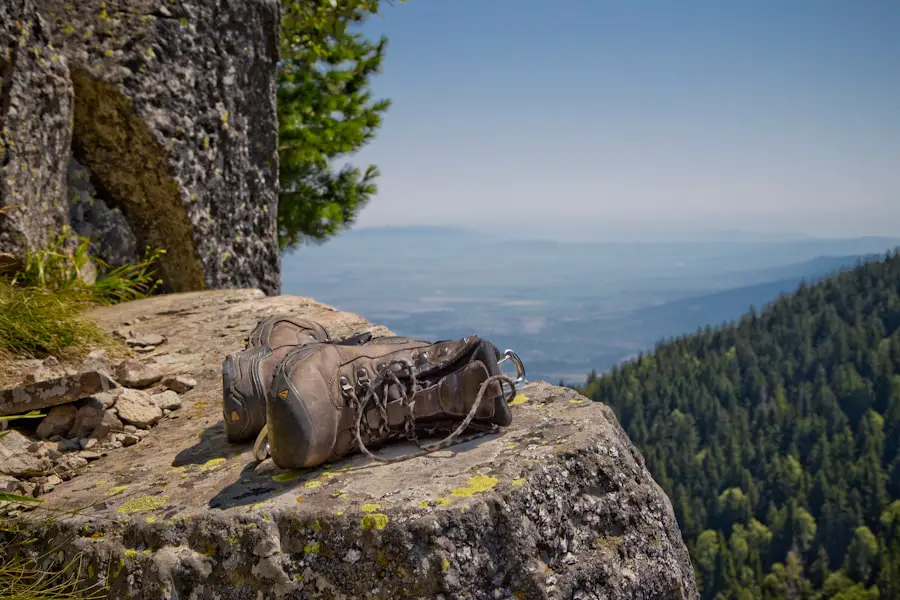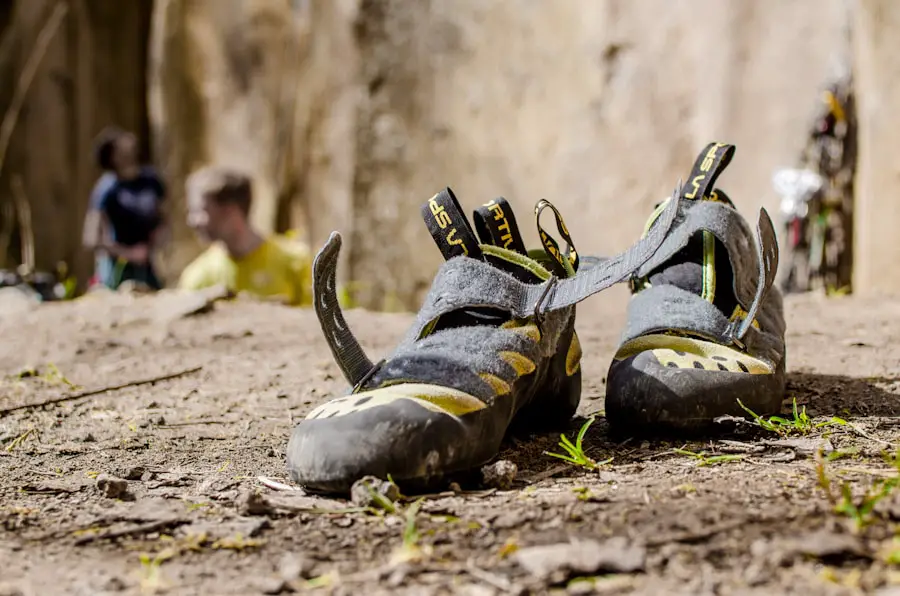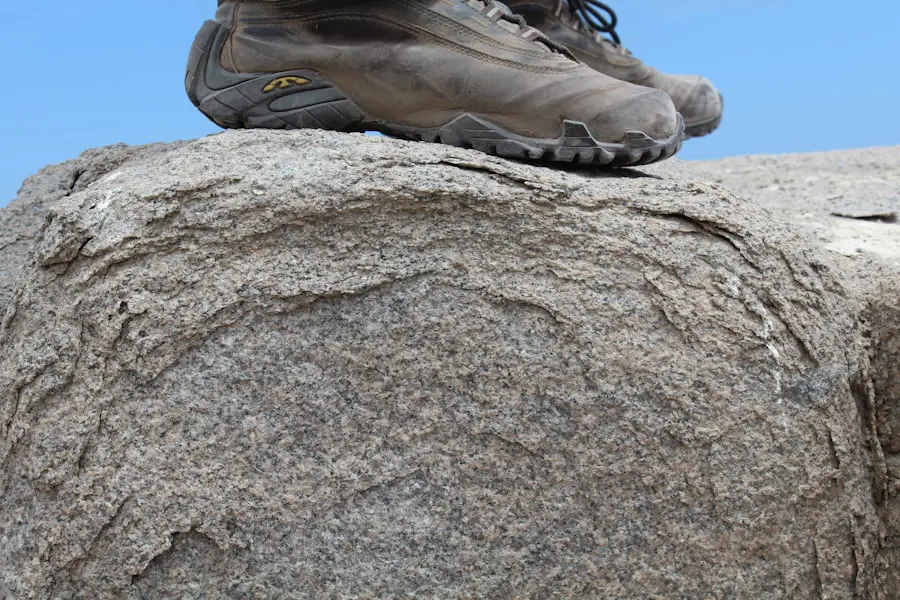Proper sizing of hiking shoes is a critical aspect that can significantly influence the overall hiking experience. Ill-fitting shoes can lead to discomfort, blisters, and even long-term foot problems, which can deter individuals from enjoying the great outdoors. When embarking on a hike, the feet undergo various stresses, including pressure from uneven terrain and the weight of a backpack.
Therefore, ensuring that your hiking shoes fit correctly is not merely a matter of comfort; it is essential for performance and safety. A well-fitted shoe provides the necessary support and stability, allowing hikers to navigate challenging trails with confidence. Moreover, the right size can enhance the efficiency of movement.
When shoes are too tight, they can restrict blood flow and cause pain, while shoes that are too loose may lead to instability and an increased risk of injury. The importance of proper sizing extends beyond just the physical aspects; it also affects mental well-being. A hiker who is comfortable in their footwear is more likely to enjoy the journey, focus on the scenery, and engage with fellow hikers rather than being preoccupied with foot pain.
Thus, understanding the nuances of hiking shoe sizing is paramount for both novice and seasoned hikers alike.
Key Takeaways
- Proper hiking shoe sizing is crucial for comfort, support, and preventing injuries on the trail.
- To measure your feet for hiking shoe sizing, stand on a piece of paper and trace the outline, then measure the length and width.
- When finding the right hiking shoe width, consider the ball of your foot and ensure there is no pinching or sliding.
- Trying on hiking shoes in the afternoon is important as your feet tend to swell throughout the day, giving you a more accurate fit.
- When accounting for sock thickness in hiking shoe sizing, wear the socks you plan to hike in and adjust the shoe size accordingly.
How to Measure Your Feet for Hiking Shoe Sizing
Measuring your feet accurately is the first step in finding the right hiking shoe size. To begin, gather a few essential tools: a ruler or measuring tape, a piece of paper, and a pen or pencil. Start by placing the piece of paper on a flat surface against a wall.
Stand barefoot on the paper with your heel against the wall. Ensure that your weight is evenly distributed on both feet. Using the pen or pencil, trace around your foot, making sure to capture the outline as closely as possible.
This method provides a clear representation of your foot’s shape and size. Once you have traced both feet, measure the length from the heel to the longest toe using the ruler or measuring tape. It’s important to note that many people have one foot larger than the other; therefore, always use the measurement of your larger foot when determining shoe size.
Additionally, measuring your feet at different times of the day can yield varying results due to natural swelling that occurs throughout the day. This variability underscores the importance of taking accurate measurements to ensure a proper fit when selecting hiking shoes.
Tips for Finding the Right Hiking Shoe Width

Finding the right width for hiking shoes is just as crucial as determining length. Hiking shoes come in various widths—narrow, standard, and wide—to accommodate different foot shapes. A shoe that is too narrow can cause pinching and discomfort, while one that is too wide may lead to instability and blisters due to excessive movement within the shoe.
To find your ideal width, consider not only your foot’s measurements but also its shape. Some individuals have high arches or flat feet, which can influence how a shoe fits. When trying on hiking shoes, pay attention to how they feel across the widest part of your foot—the ball of the foot.
A good rule of thumb is that you should be able to wiggle your toes comfortably without feeling constricted. Additionally, many brands offer specific models designed for different foot shapes; for instance, some brands cater specifically to those with wider feet or higher arches. Exploring these options can lead to a more comfortable fit and enhance overall hiking performance.
The Importance of Trying on Hiking Shoes in the Afternoon
| Time of Day | Impact on Shoe Fit |
|---|---|
| Morning | Feet are typically less swollen, may result in a tighter fit |
| Afternoon | Feet are usually more swollen, providing a more accurate fit |
| Evening | Feet are most swollen, may result in a looser fit |
The time of day when you try on hiking shoes can significantly impact how they fit. Feet tend to swell throughout the day due to various factors such as activity level and temperature changes. As a result, trying on shoes in the afternoon or evening can provide a more accurate representation of how they will feel during extended wear.
This practice helps ensure that you select a size that accommodates any swelling that may occur during hikes.
Additionally, trying on shoes later in the day allows you to assess how they feel during periods of increased activity. When you walk around in them, pay attention to any pressure points or areas where the shoe may feel too tight or loose.This proactive approach can prevent future discomfort during hikes and help you make an informed decision about which pair will best suit your needs.
How to Account for Sock Thickness in Hiking Shoe Sizing
Sock thickness plays a pivotal role in achieving an optimal fit for hiking shoes. The type of socks you plan to wear can affect how snugly your shoes fit and how much room you need in them. For instance, if you typically wear thick wool socks for warmth during colder hikes, you may need to size up to accommodate this added bulk.
Conversely, if you prefer lightweight synthetic socks for breathability in warmer conditions, a standard size may suffice. When trying on hiking shoes, it’s advisable to wear the type of socks you intend to use during your hikes. This practice allows you to gauge how well the shoe fits with your chosen sock thickness and ensures that there is enough room for comfort without compromising support.
Additionally, consider that moisture-wicking socks can help manage sweat and keep your feet dry, which is essential for preventing blisters and maintaining comfort over long distances.
The Role of Toe Room in Hiking Shoe Sizing

Preventing Discomfort and Injury
When trying on hiking shoes, it’s essential to ensure that there is adequate space for your toes to move freely without feeling cramped. A general guideline is to have about a thumb’s width of space between your longest toe and the front of the shoe when standing upright. This allowance helps prevent issues such as black toenails or painful blisters that can arise from prolonged pressure on the toes during descents.
Toe Movement and Interaction
Additionally, consider how your toes interact with the shoe during various activities such as climbing or descending steep trails. A shoe with too little toe room may cause discomfort when navigating downhill sections where your feet slide forward within the shoe.
Striking a Balance
Conversely, too much space can lead to instability and lack of control over uneven terrain. Striking a balance between snugness and toe room is vital for ensuring both comfort and performance while hiking.
Considering the Terrain and Conditions When Choosing Hiking Shoe Size
The terrain and conditions you plan to encounter during your hikes should also influence your choice of shoe size. Different types of trails—ranging from rocky paths to muddy trails—can affect how your feet move within your shoes. For instance, if you anticipate hiking on rugged terrain with significant elevation changes, you may want a slightly tighter fit for better control and stability.
On the other hand, if you’re planning a leisurely hike on flat ground or through wet conditions, a looser fit may provide more comfort. Weather conditions also play a role in sizing considerations. In colder climates where thicker socks are necessary for warmth, opting for a larger size may be prudent to accommodate this added insulation without compromising circulation.
Conversely, in hot weather where moisture management is key, ensuring that there is enough room for airflow can help keep your feet cool and dry. By taking into account both terrain and weather conditions when selecting hiking shoes, you can enhance your overall hiking experience.
The Benefits of Professional Fitting for Hiking Shoes
While many hikers may feel confident selecting their own footwear based on personal measurements and preferences, seeking professional fitting services can provide significant advantages. Professional fitters possess specialized knowledge about various brands and models, allowing them to recommend options tailored specifically to individual foot shapes and sizes. They often utilize advanced fitting technology that can assess foot arch height, width, and pressure points more accurately than traditional methods.
Additionally, professional fitters can offer insights into specific features that may enhance performance based on intended use—such as cushioning levels for long-distance hikes or traction patterns for slippery surfaces. This expertise can save time and reduce frustration when searching for the perfect pair of hiking shoes. Furthermore, many outdoor retailers offer return policies that allow customers to test their shoes on actual trails before committing fully; this added layer of assurance can be invaluable in ensuring that hikers make informed decisions about their footwear choices.
In conclusion, understanding proper hiking shoe sizing involves multiple factors ranging from accurate foot measurements to considering terrain conditions and sock thickness. By taking these elements into account and potentially seeking professional fitting services, hikers can significantly enhance their comfort and performance on the trails.
When considering how a hiking shoe should fit, it is important to also think about the gear you will need for other outdoor activities. One essential piece of equipment for outdoor enthusiasts is a travel fishing pole. In a recent article on TakeTravelInfo, they highlight some of the best travel fishing poles on the market. Just like finding the right fit for your hiking shoes, choosing the right fishing pole can make a big difference in your outdoor experience. So, whether you are hitting the trails or casting a line, it’s important to have the right gear that fits your needs.
Love travel? Join Our Facebook Community
FAQs
What are the key factors to consider when fitting hiking shoes?
When fitting hiking shoes, it’s important to consider the length, width, and volume of the shoe, as well as the overall comfort and support it provides.
How should the length of a hiking shoe fit?
The length of a hiking shoe should allow for a thumb’s width of space between the end of the longest toe and the front of the shoe. This provides room for the foot to swell during long hikes and prevents the toes from hitting the front of the shoe on downhill descents.
What about the width of a hiking shoe?
The width of a hiking shoe should provide a snug, but not tight, fit. There should be no pressure points or pinching, and the shoe should not feel too loose or too tight around the sides of the foot.
How should the volume of a hiking shoe fit?
The volume of a hiking shoe refers to the amount of space inside the shoe. It should accommodate the natural shape of the foot, with no excessive pressure on the top or sides of the foot. The heel should be held securely in place to prevent slipping.
What should I look for in terms of overall comfort and support in a hiking shoe?
A well-fitting hiking shoe should provide ample cushioning and support for the arches, ankles, and heels. It should feel comfortable from the moment you put it on, with no areas of rubbing or discomfort. The shoe should also provide stability and traction on various types of terrain.
